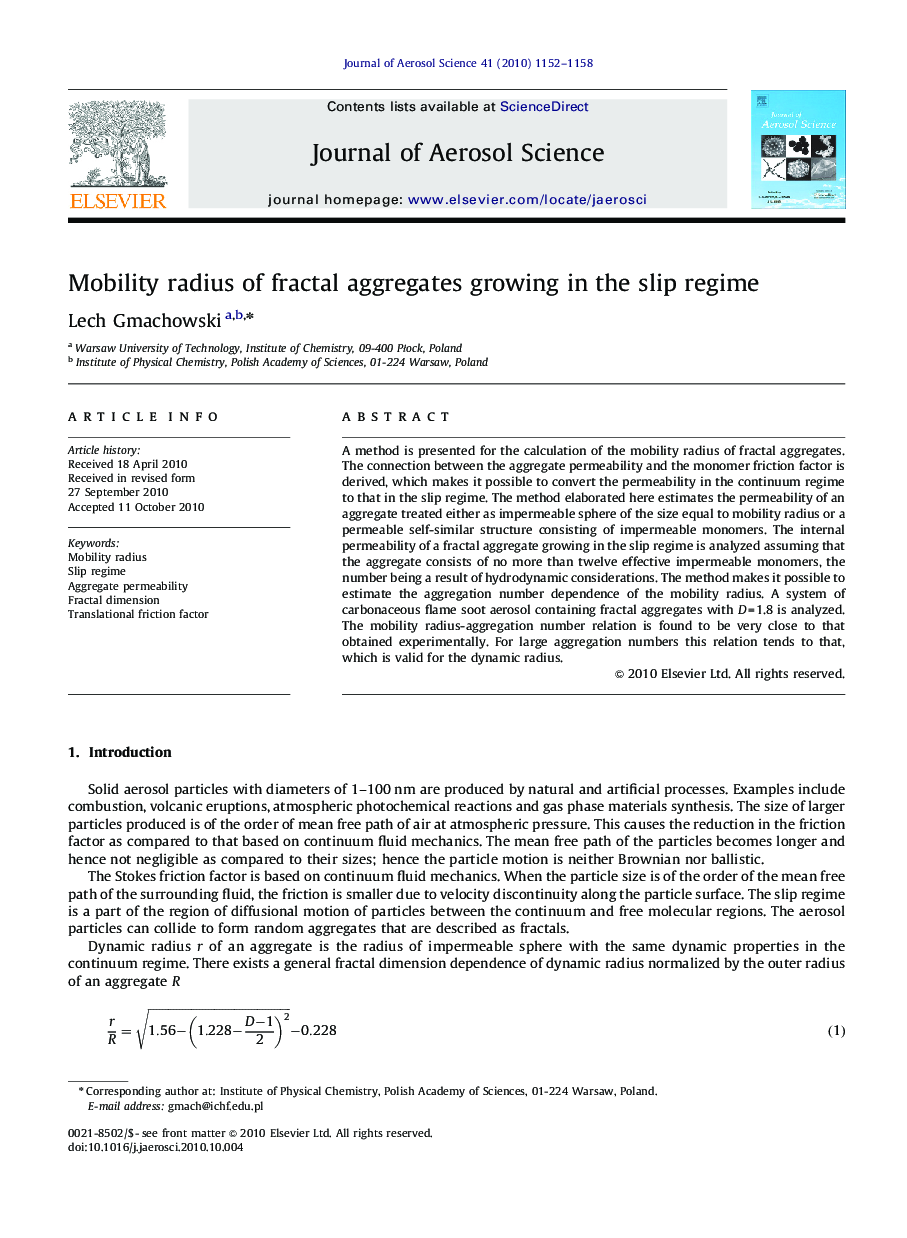| کد مقاله | کد نشریه | سال انتشار | مقاله انگلیسی | نسخه تمام متن |
|---|---|---|---|---|
| 4452815 | 1312106 | 2010 | 7 صفحه PDF | دانلود رایگان |

A method is presented for the calculation of the mobility radius of fractal aggregates. The connection between the aggregate permeability and the monomer friction factor is derived, which makes it possible to convert the permeability in the continuum regime to that in the slip regime. The method elaborated here estimates the permeability of an aggregate treated either as impermeable sphere of the size equal to mobility radius or a permeable self-similar structure consisting of impermeable monomers. The internal permeability of a fractal aggregate growing in the slip regime is analyzed assuming that the aggregate consists of no more than twelve effective impermeable monomers, the number being a result of hydrodynamic considerations. The method makes it possible to estimate the aggregation number dependence of the mobility radius. A system of carbonaceous flame soot aerosol containing fractal aggregates with D=1.8 is analyzed. The mobility radius-aggregation number relation is found to be very close to that obtained experimentally. For large aggregation numbers this relation tends to that, which is valid for the dynamic radius.
Research Highlights
► A fractal aggregate can be considered as consisting of effective impermeable sub-clusters.
► There exists a connection between the aggregate permeability and the monomer friction factor.
► Internal aggregate permeability in the continuum regime can be recalculated for the slip regime by the translational friction coefficient conversion.
► Mobility radius in the slip regime is less than dynamic radius due to higher permeability.
Journal: Journal of Aerosol Science - Volume 41, Issue 12, December 2010, Pages 1152–1158